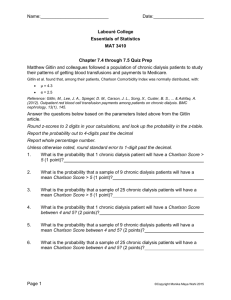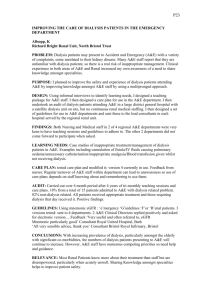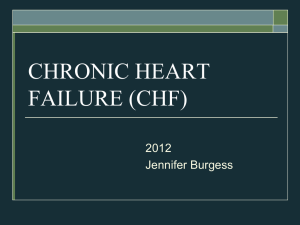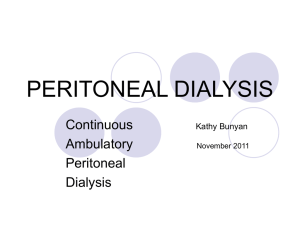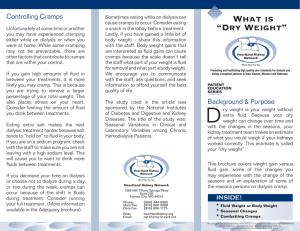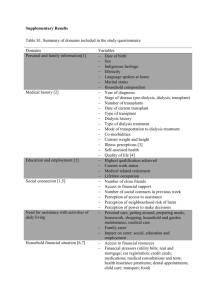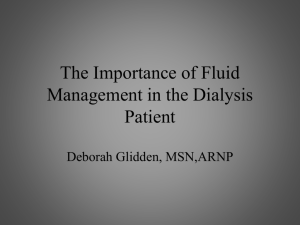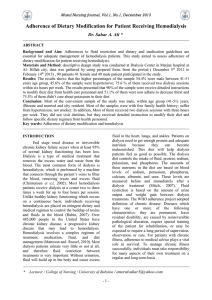DOCX ENG
advertisement
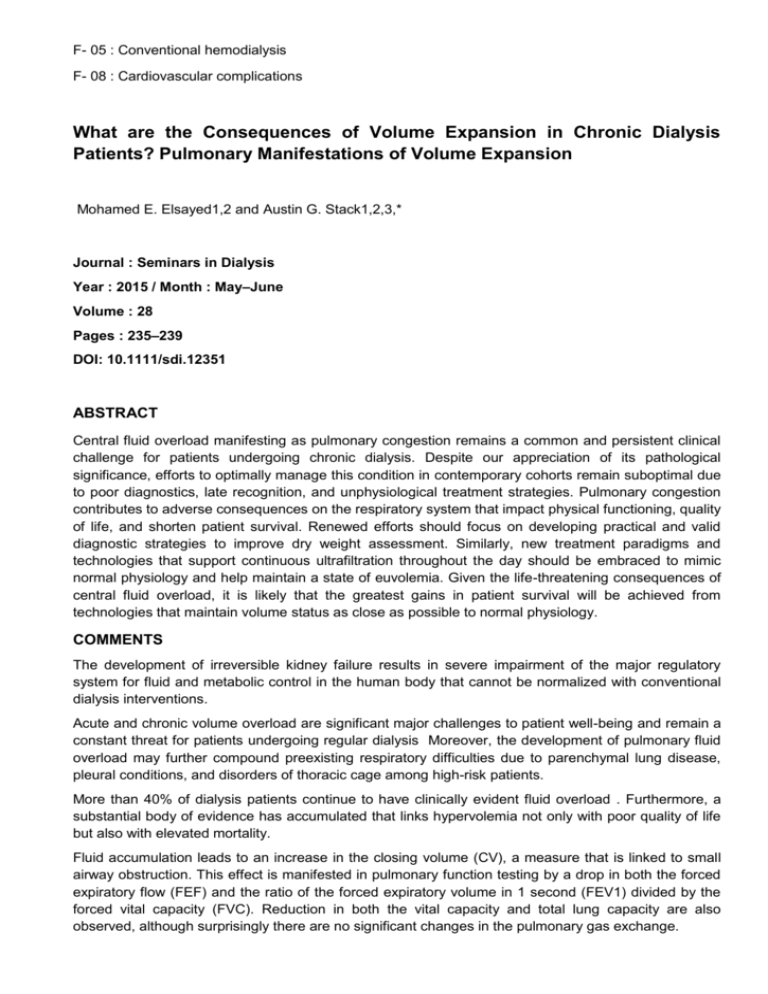
F- 05 : Conventional hemodialysis F- 08 : Cardiovascular complications What are the Consequences of Volume Expansion in Chronic Dialysis Patients? Pulmonary Manifestations of Volume Expansion Mohamed E. Elsayed1,2 and Austin G. Stack1,2,3,* Journal : Seminars in Dialysis Year : 2015 / Month : May–June Volume : 28 Pages : 235–239 DOI: 10.1111/sdi.12351 ABSTRACT Central fluid overload manifesting as pulmonary congestion remains a common and persistent clinical challenge for patients undergoing chronic dialysis. Despite our appreciation of its pathological significance, efforts to optimally manage this condition in contemporary cohorts remain suboptimal due to poor diagnostics, late recognition, and unphysiological treatment strategies. Pulmonary congestion contributes to adverse consequences on the respiratory system that impact physical functioning, quality of life, and shorten patient survival. Renewed efforts should focus on developing practical and valid diagnostic strategies to improve dry weight assessment. Similarly, new treatment paradigms and technologies that support continuous ultrafiltration throughout the day should be embraced to mimic normal physiology and help maintain a state of euvolemia. Given the life-threatening consequences of central fluid overload, it is likely that the greatest gains in patient survival will be achieved from technologies that maintain volume status as close as possible to normal physiology. COMMENTS The development of irreversible kidney failure results in severe impairment of the major regulatory system for fluid and metabolic control in the human body that cannot be normalized with conventional dialysis interventions. Acute and chronic volume overload are significant major challenges to patient well-being and remain a constant threat for patients undergoing regular dialysis Moreover, the development of pulmonary fluid overload may further compound preexisting respiratory difficulties due to parenchymal lung disease, pleural conditions, and disorders of thoracic cage among high-risk patients. More than 40% of dialysis patients continue to have clinically evident fluid overload . Furthermore, a substantial body of evidence has accumulated that links hypervolemia not only with poor quality of life but also with elevated mortality. Fluid accumulation leads to an increase in the closing volume (CV), a measure that is linked to small airway obstruction. This effect is manifested in pulmonary function testing by a drop in both the forced expiratory flow (FEF) and the ratio of the forced expiratory volume in 1 second (FEV1) divided by the forced vital capacity (FVC). Reduction in both the vital capacity and total lung capacity are also observed, although surprisingly there are no significant changes in the pulmonary gas exchange. Most studies would suggest that treatment with hemodialysis is an effective method to reduce the physical symptoms of dyspnea, decrease neuromuscular drive and that these changes correlate highly with changes in inter-dialytic weight gain. Weight loss due to fluid removal leads to better neuromechanical muscle coupling, increased inspiratory muscle strength, and better function of the small airways. The pleura are commonly affected among patients undergoing chronic dialysis and pleural effusion remains the commonest encountered complication . Chronic states of hypervolemia promote fluid accumulation in the pleural space resulting in effusions that are transudative in nature. Chronic hypervolemia may also contribute to the development and progression of pulmonary hypertension for patients undergoing dialysis. Sleep disturbances among patients undergoing chronic dialysis are increasingly recognized and chronic volume expansion may exert a specific contributory role in the pathophysiology of sleep apnea similar to other hypervolemic states . Obstructive sleep apnea is an important pathological entity that could well be responsible for substantial morbidity and mortality in dialysis patients. In conclusion, given the life-threatening consequences of central fluid overload, it is likely that the greatest gains in patient survival will be achieved from technologies that maintain volume status as close as possible to normal physiology. Pr. Jacques CHANARD Professor of Nephrology

